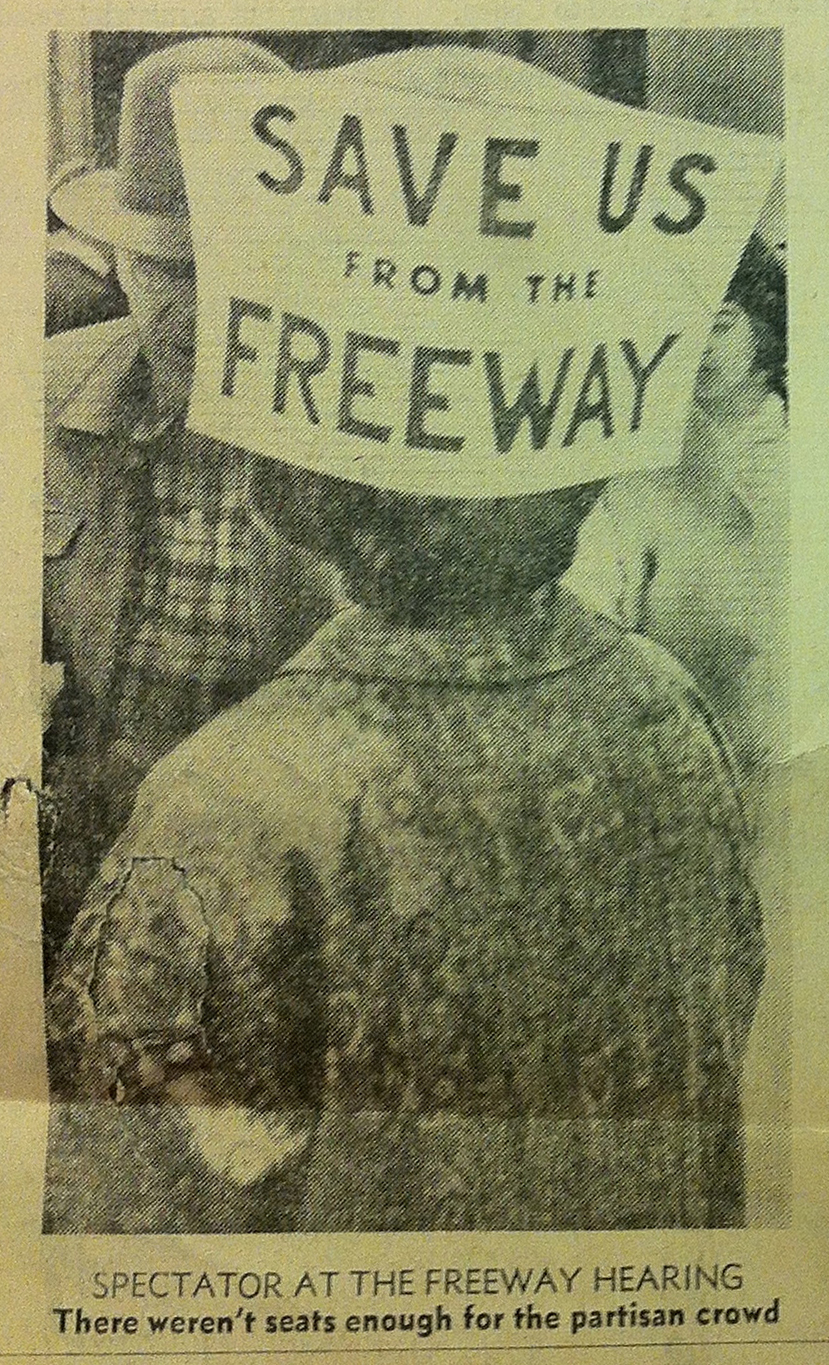Envisioning Environment
About:
Environmental reckoning, infrastructural planning, justice activism, leaps in scalar perception. The current moment is unprecedented in its magnitude; but at smaller scales these things have entangled before.
From the postwar years through the 1960s, U.S. freeway plans and the ensuing urban “freeway revolts” catalyzed a public reckoning regarding the structures and natures of cities. My multi-city, multi-scalar book project, Envisioning Environment: The Landscape Imaginaries of Urban US Freeways, 1956-1968, investigates local histories underlying several well-known late modernist freeway design projects: revealing how designer visions of urban freeways collided and coincided with activist actions and government agendas to precipitate new urban visions, forms of political action, and conceptions of environmental justice.
This work speaks to designers, historians, and environmentalists alike, articulating how visualization, new infrastructures, and public power are mobilized in times of environmental conflict and change.
From the postwar years through the 1960s, U.S. freeway plans and the ensuing urban “freeway revolts” catalyzed a public reckoning regarding the structures and natures of cities. My multi-city, multi-scalar book project, Envisioning Environment: The Landscape Imaginaries of Urban US Freeways, 1956-1968, investigates local histories underlying several well-known late modernist freeway design projects: revealing how designer visions of urban freeways collided and coincided with activist actions and government agendas to precipitate new urban visions, forms of political action, and conceptions of environmental justice.
This work speaks to designers, historians, and environmentalists alike, articulating how visualization, new infrastructures, and public power are mobilized in times of environmental conflict and change.

Supported by:
Clarence Stein Institute for Urban and Landscape Studies
Dumbarton Oaks Garden and Landscape Studies Program
Institute for Social Sciences, Cornell University
Robert D. MacDougall Traveling Scholarship, Cornell University
A. Henry Detweiller Traveling Fellowship, Cornell University
Dumbarton Oaks Garden and Landscape Studies Program
Institute for Social Sciences, Cornell University
Robert D. MacDougall Traveling Scholarship, Cornell University
A. Henry Detweiller Traveling Fellowship, Cornell University

Works...
presentation
Between Eviction and Revolt: Situating The View from the Road,” Mobility and Access in Modern Urban Landscapes, session chair Pollyanna Rhee. SAH Annual Conference, Pittsburgh, PA (April 2022).
dissertation
“Envisioning Environments: Designs for U.S. Urban Freeways, 1958-1967,” Cornell University, 2017.
article
“Drawing Natures: US Freeway Controversies, Representational Techniques, and the Rise of Ecological Design,” Journal of Design History 30.2 (2017), 157-174.
media
Quoted in: Caroline Tracey, “Redlining Returns to Denver, but with a Neoliberal Twist,” The Nation, July 31, 2017.
presentation
“Urban Design, Local Culture, and Emergent Environmentalism: The San Francisco Panhandle Freeway Debates, 1959-1966,” Across the Great Divide California Design Colloquium, convened by Marc Treib, Greg Castillo, Andrew Shanken, and Waverly Lowell. University of California, Berkeley (March 2016).
media
Quoted in: Nate Berg, “Take the Parkway to the Freeway to the Automated Roadway,” Boom: a Journal of California, 6.1 (2016).
presentation
“Drawing Natures: US Freeway Controversies, Representational Techniques, and the Rise of Environmental Design,” Environmental Histories of Design Workshop, convened by Kjetil Fallan and Finn Arne Jacobsen. Rachel Carson Center, Munich, Germany (June 2015).
presentation
“Drawing the Hybrid Freeway: Urban Design and Non/Human Relationship,” Frontiers in Urban Landscape Research Workshop, convened by Thaisa Way and John Beardsley. Dumbarton Oaks, Washington, DC (November 2015).
presentation
Between Eviction and Revolt: Situating The View from the Road,” Mobility and Access in Modern Urban Landscapes, session chair Pollyanna Rhee. SAH Annual Conference, Pittsburgh, PA (April 2022).
dissertation
“Envisioning Environments: Designs for U.S. Urban Freeways, 1958-1967,” Cornell University, 2017.
article
“Drawing Natures: US Freeway Controversies, Representational Techniques, and the Rise of Ecological Design,” Journal of Design History 30.2 (2017), 157-174.
media
Quoted in: Caroline Tracey, “Redlining Returns to Denver, but with a Neoliberal Twist,” The Nation, July 31, 2017.
presentation
“Urban Design, Local Culture, and Emergent Environmentalism: The San Francisco Panhandle Freeway Debates, 1959-1966,” Across the Great Divide California Design Colloquium, convened by Marc Treib, Greg Castillo, Andrew Shanken, and Waverly Lowell. University of California, Berkeley (March 2016).
media
Quoted in: Nate Berg, “Take the Parkway to the Freeway to the Automated Roadway,” Boom: a Journal of California, 6.1 (2016).
presentation
“Drawing Natures: US Freeway Controversies, Representational Techniques, and the Rise of Environmental Design,” Environmental Histories of Design Workshop, convened by Kjetil Fallan and Finn Arne Jacobsen. Rachel Carson Center, Munich, Germany (June 2015).
presentation
“Drawing the Hybrid Freeway: Urban Design and Non/Human Relationship,” Frontiers in Urban Landscape Research Workshop, convened by Thaisa Way and John Beardsley. Dumbarton Oaks, Washington, DC (November 2015).


